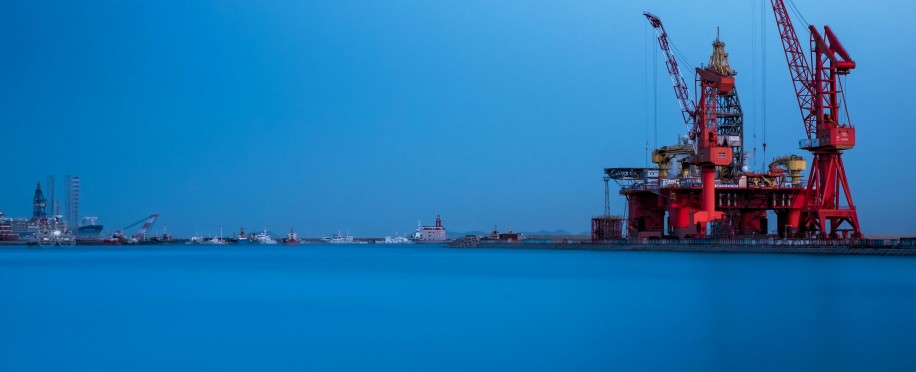Copyright © 2025 lmitac.com All Rights Reserved. Contact - Terms and Conditions - Privacy Policy - Quality Policy - Become an instructor - Vacancies - Sitemap
London Maritime Academy is a trade name for London Premier Groupversion: 2.9.0
London Maritime Academy is a trade name for London Premier Group

Posted on : 8/14/2025, 12:04:22 AM
EEOI is the real-world indicator that enables ship operators to track actual performance and identify areas where efficiency can be improved and emissions reduced—making it all the more important to understand, especially in a world of increasing regulatory and environmental pressures, where such insight simply cannot be ignored.
If you're looking for a reliable and smart way to improve energy usage and reduce emissions without compromising transport efficiency, EEOI is your ideal tool. Whether you're an operator, a company aiming for environmental excellence, or a maritime professional focused on cutting costs, this indicator provides authentic, actionable insight into your vessels’ performance.
The Energy Efficiency Operational Indicator (EEOI) is a metric used by the IMO to assess the energy efficiency of ships during operation, i.e., during actual voyages, not just during design. Put simply, EEOI is usually calculated as the ratio of carbon emissions (CO₂) to the weight carried (tons of cargo) multiplied by the voyage length (nautical miles).
Thanks to its simplicity and accuracy, this indicator is widely used by global shipping companies to measure greenhouse gases (GHG) emitted from ships during daily activities — and that’s not all. Also, the EEOI helps monitor fuel consumption and operating efficiency, earning recognition from international bodies—such as the World Maritime Forum, a global forum focused on maritime challenges—as one of the most effective indicators for improving performance.
Building on that, what makes the EEOI unique is that it takes into account actual conditions such as the type of cargo, speed, and the marine environment in which the ship operates. Meanwhile, the EEDI is used during the design phase, while the EEOI focuses on quantifying a ship’s actual performance.
The question of what constitutes a good EEOI is not easy, as values vary depending on the class of ship, the category of cargo, the capacity, and the size of the fleet. However, a low average EEOI indicates that the ship is efficient in its use of fuel and energy, emitting less CO₂ per ton-mile.
For this reason, organizations such as the IMO have developed guidelines and standard benchmarks to determine when EEOI figures are acceptable or should be improved. Under SEEMP, each ship must have an annual EEOI improvement plan.
Furthermore, the use of tools, performance evaluation programs, environmental monitoring reports, calculating systems, and AER indicators to compare against global averages to determine true performance, as well as enrolling in tailored training programs, such as those offered by the Maritime Training Academy UK, helps professionals and energy efficiency officers optimize EEOI and make informed decisions to reduce consumption and costs and improve efficiency.

The EEOI is calculated using the following formula:
EEOI = CO₂ emitted / (cargo transported in tons × distance traveled in nautical miles).
Emission is calculated based on the actual fuel use, such as oil or gas, taking into account fuel intensity and grade. Real-time data collected during the voyage is used, including data from ship logs or online systems such as MRV.
Specialized software and document files (doc and PDF) are used to record and organize data in a method that is easy to share, view, and analyze, providing relevant guidance for effective data management.
Therefore, improving EEOI is not limited to reducing speed. It also includes establishing the most appropriate fuel choice, optimizing the design, and controlling on-board energy consumption. Modern measurement tools and calculation platforms have been introduced to enhance accuracy and increase the reliability of performance assessments, which play a major role in sustainable maritime practices.
The EEOI is used to determine the efficiency of a ship's daily performance. Thus, by analyzing the EEOI, which reflects the relationship between fuel consumption, travel range, and cargo volume, company managers can accurately assess a ship's efficiency.
This index is a core requirement under the SEEMP program and within the IMO and MEPC regulatory framework. It also supports EU reporting and international verification requirements.
As a key distinction, EEOI and EEDI differ in the stage at which the measurement is performed.
EEDI (Energy Efficiency Design Index) is an indicator developed during ship design and based on specific design and standards to measure expected emissions.
EEOI (Energy Efficiency Operational Indicator) is an indicator calculated during actual voyages based on data collected.
EEDI represents the abstract aspect of performance, while EEOI captures the accurate picture, measuring emissions and operational efficiency.
That is:
The primary difference between EEOI and EEDI lies in timing and scope. The Energy Efficiency Design Index is applied during ship design and measures the environmental efficiency of the design before operation. This means: it is based on predefined assumptions.
Despite their differences, the two indicators work hand in hand to support the IMO's goals for reducing greenhouse gas emissions and improving the efficiency of the global fleet.
EEOI is an advanced calculation tool aimed at enhancing ship efficiency, reducing carbon emissions, and achieving environmental protection goals.
Whether you operate in London, Dubai, Athens, Rotterdam, Hamburg or Istanbul, LMA Training offers internationally accredited marine training designed to meet local and global requirements, supported regionally with flexible training methods.
Don't miss the opportunity to establish energy efficiency using modern applications, practical metrics, and advanced analysis.